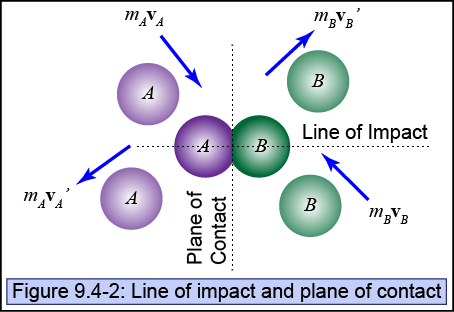Impact
Impact
Impact: When two bodies collide over a very small interval of time and exert relatively large forces on one another. A good example of impact is the game of billiards.

There are two axes that, if identified, may simplify the analysis of the system of colliding particles.
- Line of impact: The line drawn between the centers of mass of the two bodies that passes through the contact point.
- Plane of contact: Perpendicular to the line of impact and resides at the contact between the two bodies.

Coefficient of restitution
Energy is generally not conserved during impact (inelastic). Energy is lost due to …
- Plastic material deformation
- Heat
- Sound
If the bodies stick together after the impact, it is perfectly inelastic. If energy is conserved, the impact is perfectly elastic.
A measure of the elasticity of a collision is its coefficient of restitution.
- e = 0 (perfectly elastic)
- e = 1 (perfectly inelastic/plastic)
Name examples of impacts that are nearly perfectly elastic and perfectly inelastic.
